Colorbond wall cladding transforms homes with durable, weather-resistant, and aesthetically pleasing solutions. Its versatility offers long-lasting protection and modern design options, enhancing both functionality and curb appeal.
Overview of Colorbond Steel
Colorbond steel is a highly durable, pre-painted material designed for exterior applications, including wall cladding. Manufactured by BlueScope Steel, it combines a steel base with a corrosion-resistant coating. Available in 22 core colors, including a premium matt finish, Colorbond steel offers aesthetic versatility. Its lightweight yet robust structure makes it ideal for cladding, providing resistance to chipping, flaking, and blistering. Compliant with Australian standards, it ensures long-lasting performance and weather resistance. Colorbond steel is widely used in roofing and walling, delivering a practical and visually appealing solution for modern constructions.
Benefits of Using Colorbond for Wall Cladding
Colorbond steel wall cladding offers numerous benefits, including exceptional durability, resistance to weathering, and low maintenance. Its pre-painted finish ensures a long-lasting, vibrant appearance with minimal upkeep. The material is lightweight, making installation easier and reducing structural load. It also provides excellent resistance to chipping, flaking, and blistering, ensuring a timeless look. Additionally, Colorbond steel is fire-resistant and environmentally friendly, aligning with sustainable building practices. Its wide range of colors and finishes allows for customizable designs, enhancing both residential and commercial exteriors with style and functionality.
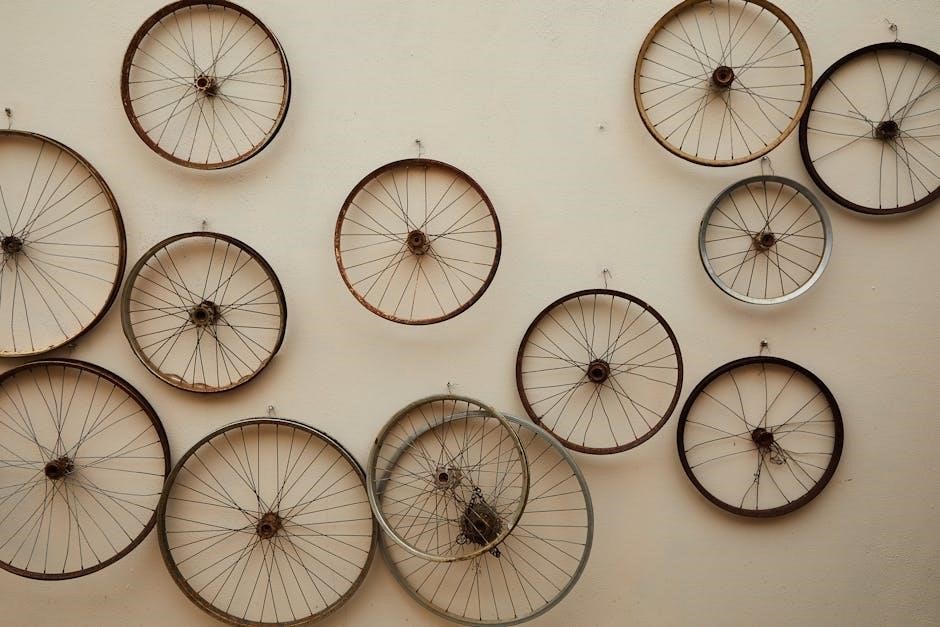
Materials and Tools Needed
Essential materials include Colorbond panels, flashings, fasteners, and sealants. Tools like saws, drills, and measuring tapes are required for precise cutting and secure installation.
Essential Materials for Installation
The installation of Colorbond wall cladding requires specific materials to ensure durability and weather resistance. High-tensile G550 Colorbond steel panels are the primary material, offering strength and corrosion resistance. Zincalume steel is another option, known for its durability and protective coating. Flashings are crucial for sealing edges and joints, preventing water ingress. Fasteners like screws and rivets are selected based on compatibility with Colorbond steel to avoid corrosion. Sealants and primers are also necessary to prepare surfaces and enhance adhesion. All materials must comply with Australian standards for optimal performance and longevity.
Tools Required for the Process
Installing Colorbond wall cladding demands the right tools for precision and efficiency. A drill, screwdriver, and impact driver are essential for fastening panels securely. Cutting tools like a circular saw or tin snips are necessary for trimming panels to size. Safety gear, such as gloves and safety glasses, protects during handling and cutting. A measuring tape and spirit level ensure accurate alignment and placement. Flashing tools and sealants are used to weatherproof joints. Proper tools ensure a professional finish and prevent damage to the materials, making the installation process smoother and more effective.

Preparation of the Wall Surface
Preparation of the wall surface is crucial for successful Colorbond cladding installation. Ensuring the substrate is flat, stable, and free from debris guarantees proper adhesion and longevity.
Assessing the Substrate
Assessing the substrate is a critical step in Colorbond wall cladding installation. Ensure the wall surface is structurally sound, free from damage, and compatible with the cladding material. Check for any cracks, unevenness, or existing coatings that may interfere with adhesion. Verify that the substrate is flat and stable to prevent cladding failure. Additionally, ensure the surface is clear of debris, old adhesives, or paint. If necessary, repair damaged areas and apply a suitable primer to enhance adhesion. Proper substrate preparation ensures a secure and long-lasting cladding installation, avoiding future issues like bubbling or detachment.
Cleaning and Priming the Surface
Cleaning and priming the surface is essential for a successful Colorbond wall cladding installation. Start by thoroughly cleaning the substrate to remove dirt, grease, or contaminants that may hinder adhesion. Use a mild detergent and water, followed by a rinse with clean water. Once dry, apply a high-quality primer specifically designed for metal surfaces. This step enhances paint adhesion, reduces corrosion risk, and ensures a smooth, even finish. Always follow the manufacturer’s instructions for primer application to achieve optimal results and extend the cladding’s lifespan.
Ensuring Structural Integrity
Ensuring structural integrity is crucial before installing Colorbond wall cladding. Inspect the substrate for any damage, rot, or unevenness and address these issues promptly. Verify that the wall structure can support the weight of the cladding and any external forces like wind or rain. Use compatible materials to prevent corrosion and ensure all fasteners are securely attached. Proper alignment and leveling of the substrate are essential for a stable installation. A structurally sound base guarantees the cladding performs optimally, providing long-lasting durability and weather resistance.
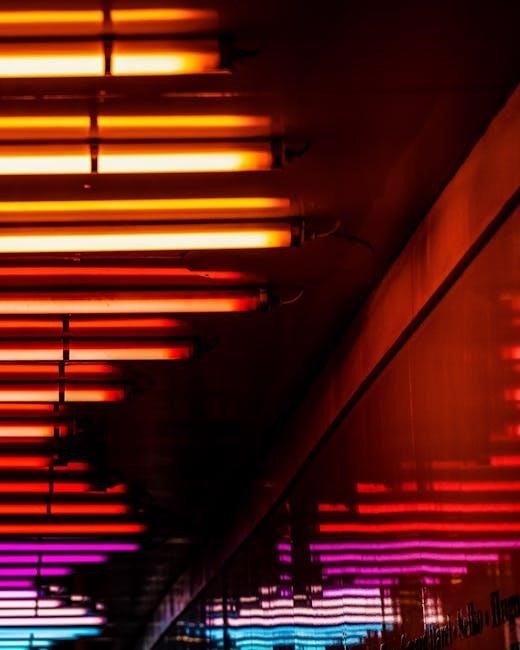
Measuring and Cutting Colorbond Panels
Accurate measurement is key to successful Colorbond panel installation. Use a square for precise cuts, ensuring panels fit seamlessly. Measure twice, cut once to avoid waste and ensure proper fit.
Accurate Measurement Techniques
Accurate measurements are critical for a seamless Colorbond installation. Use a high-quality tape measure to record wall dimensions, ensuring precise panel fit. Double-check all measurements to prevent costly errors. Mark panels clearly with a marker, considering expansion gaps. Transfer measurements to panels using a straightedge for straight cuts. For complex shapes, create templates to guide your tools. Always measure twice and cut once to avoid waste and ensure panels align perfectly during installation, saving time and resources.
Cutting Tools and Methods
For cutting Colorbond panels, use an angle grinder or circular saw with a metal-cutting blade. These tools ensure clean, precise cuts. Always cut on a stable surface, using a straightedge as a guide for straight lines. For curved cuts, employ a jigsaw or nibbler. Apply steady pressure to avoid warping the metal. Wear safety goggles and gloves to protect against debris. Ensure the blade is sharp to prevent tearing the coating. Double-check measurements before cutting to minimize waste. Proper cutting techniques maintain panel integrity and ensure a professional finish.
Safety Precautions During Cutting
Always wear protective gear, including safety glasses, gloves, and a dust mask when cutting Colorbond panels. Ensure the work area is well-ventilated to avoid inhaling metal particles. Secure the panel firmly to prevent movement during cutting. Use appropriate tools with sharp blades to minimize sparks and avoid applying excessive pressure, which can cause accidents. Keep loose clothing tied back and avoid jewelry that might catch in tools. Ensure power tools are properly grounded and maintain a safe distance from bystanders. Regularly inspect equipment for damage and follow manufacturer guidelines to ensure safe operation.
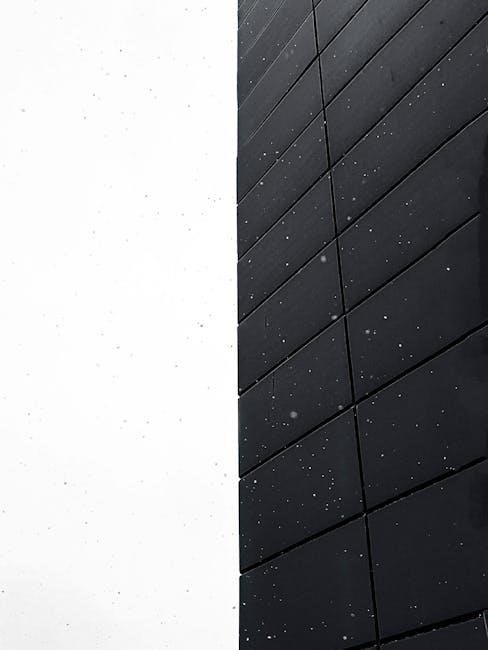
Installation of Flashings
Installing flashings is essential around windows, doors, and roof-wall intersections to prevent water ingress and ensure weatherproofing. Properly sealed flashings protect the structure from moisture damage.
Importance of Flashings in Weatherproofing
Importance of Flashings in Weatherproofing
Flashings are critical for preventing water penetration and ensuring weatherproofing in Colorbond wall cladding installations. They are installed around windows, doors, and roof-wall intersections to protect against moisture ingress, which can lead to structural damage. Properly installed flashings create a secure seal, preventing water from entering gaps and compromising the integrity of the building. This ensures long-term durability and maintains the aesthetic appeal of the cladding. Flashings also play a key role in safeguarding against corrosion and damage caused by weather conditions, making them an essential component of a successful installation.
Window and Door Flashings
Window and door flashings are essential for preventing water ingress around openings, ensuring the structural integrity and aesthetic appeal of Colorbond cladding. Installed around windows and doors, these flashings protect against moisture penetration, which can lead to damage and decay. Properly sealed flashings prevent water seepage, maintaining the building’s weatherproofing. Compliance with installation standards like AS 1562.1 ensures long-term durability and resistance to weather conditions. Improper installation can lead to leaks and structural issues, making professional installation crucial.
Roof and Wall Intersection Flashings
Roof and wall intersection flashings are critical for sealing the junction where roofing meets wall cladding, preventing water infiltration. These flashings ensure a watertight connection, protecting against weather-related damage. Properly installed flashings at these intersections are vital to maintain structural integrity and prevent leaks. They must be tailored to the specific design of the roof and wall system, with materials like Colorbond steel offering durability and compatibility. Regular inspection and maintenance are essential to ensure long-term performance and avoid costly repairs. Professional installation is recommended to guarantee a secure and weatherproof seal at these intersections.
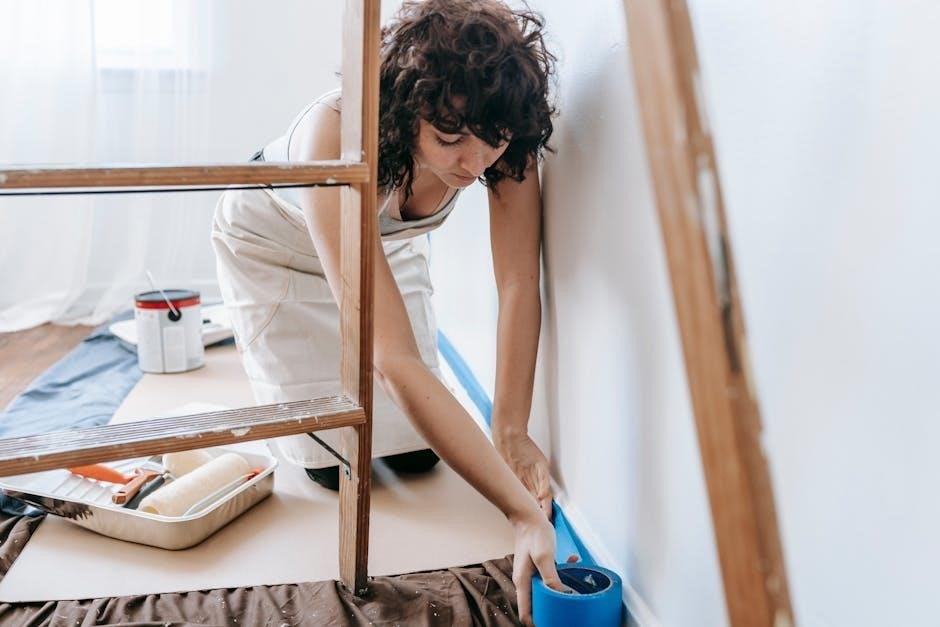
Fastening Methods
Choosing the right fasteners is essential for secure Colorbond wall cladding installation. Correct spacing and secure attachment ensure structural integrity and prevent movement or damage over time.
Choosing the Right Fasteners
Selecting the right fasteners for Colorbond wall cladding is crucial for durability and weather resistance. Use corrosion-resistant materials like stainless steel or aluminum to prevent rust; Fasteners should be compatible with Colorbond steel and suitable for the substrate. Avoid using copper or treated timber to prevent material incompatibility. Ensure fasteners are durable and weather-tight, especially in coastal or high-moisture areas. Always follow manufacturer guidelines and local building codes to ensure compliance and longevity of the cladding system. Proper fastening prevents damage and ensures a secure installation.
Correct Spacing and Placement

Proper spacing and placement of Colorbond panels ensure structural integrity and visual appeal. Panels should be evenly spaced, with joints aligned to maintain a consistent look. Fasteners must be placed at recommended intervals, typically between 300-400mm, to prevent sagging or buckling. Ensure panels align with flashings and other structural elements for weather-tight sealing. Correct placement minimizes warping and enhances durability, while maintaining the cladding’s aesthetic appeal and functionality. Always refer to manufacturer guidelines for specific spacing requirements to achieve a professional finish. Proper alignment and spacing are key to a successful installation.
Securing Panels Properly
Securing Colorbond panels properly is essential for durability and weather resistance. Use compatible fasteners, ensuring they are tightened evenly to avoid warping. Fasteners should penetrate the substrate sufficiently, holding panels firmly without over-tightening, which can damage the coating. Align panels correctly to prevent gaps and ensure a flush finish. Double-check all connections to ensure they are secure and evenly spaced. Proper securing prevents movement, reduces noise, and maintains the cladding’s structural integrity. Follow manufacturer guidelines to achieve a professional, long-lasting installation that withstands environmental stresses effectively.

DIY vs. Professional Installation
DIY installation saves costs but requires skill and time, while professionals offer expertise, warranties, and proper techniques, ensuring durability and compliance with manufacturer guidelines.
Pros and Cons of DIY Installation
DIY Colorbond wall cladding installation can save costs but requires precise skills and time. It offers a sense of accomplishment but involves risks like incorrect measurements or fastening. Proper tools and knowledge are essential to avoid damage. While it’s a cost-effective option, improper techniques may lead to weatherproofing issues or reduced durability. Ensure adherence to manufacturer guidelines to prevent complications. DIY is feasible for small projects but demands careful planning and execution. Weighing pros and cons helps determine if DIY or professional installation is more suitable for your project.
When to Hire a Professional
Hiring a professional for Colorbond wall cladding is advisable for complex projects or large-scale installations. Experts ensure compliance with local building codes and manufacturer specifications, minimizing risks of errors. They handle challenging aspects like flashing installation and structural integrity effectively. Professionals also provide warranties and liability coverage, ensuring a durable and weather-tight finish. If you lack experience or tools, hiring a licensed installer guarantees a flawless result, saving time and potential repair costs. Their expertise ensures your cladding withstands harsh weather conditions and maintains its aesthetic appeal over time.

Maintenance and Repair
Regular cleaning prevents dirt buildup. Inspect for damage and address promptly. For extensive issues, seek professional help to maintain durability and appearance.
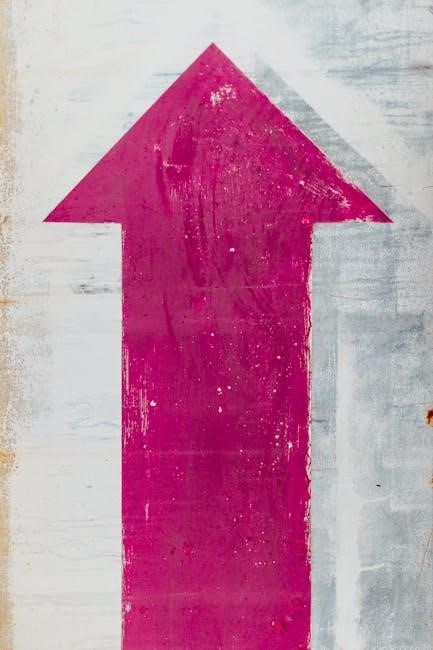
Cleaning and Upkeep
Regular cleaning is essential to maintain the appearance and durability of Colorbond wall cladding. Use mild detergents and water to remove dirt and grime, avoiding abrasive materials. Avoid high-pressure washes, as they may damage the surface. For stubborn stains, soft brushes or sponges can be used. Always rinse thoroughly to prevent residue buildup. Regular upkeep ensures the cladding remains weather-tight and retains its vibrant color. Avoid contact with incompatible materials like timber or concrete to prevent corrosion. By following these steps, your Colorbond cladding will remain in excellent condition for years.
Inspecting for Damage
Regular inspections are crucial to identify and address potential damage to Colorbond wall cladding. Check for dents, scratches, or corrosion, especially around fasteners and flashings. Look for signs of weathering, such as faded colors or chalking, which may indicate wear. Inspect seams and joints for gaps or misalignment that could compromise weatherproofing. Addressing issues early prevents further deterioration. Use touch-up paints for minor scratches and replace severely damaged panels promptly. This proactive approach ensures the cladding’s integrity and maintains its protective and aesthetic qualities over time.
Repairing Damaged Panels
Repairing damaged Colorbond panels is essential to maintain the structural integrity and appearance of the cladding. For minor scratches, apply Colorbond touch-up paint to prevent rust. For larger dents or holes, carefully cut out the damaged section and replace it with a new panel, ensuring a snug fit. Secure the new panel using compatible fasteners and seal edges with silicone to prevent water ingress. If damage is extensive, consult a professional for precise replacement. Proper repair techniques ensure longevity and preserve the weatherproofing capabilities of the cladding system. Regular maintenance is key to avoiding costly future repairs.
Colorbond wall cladding offers a durable, versatile, and aesthetically pleasing solution for exterior facades. Proper installation, regular maintenance, and timely repairs ensure its longevity and performance. Whether opting for DIY or professional installation, adherence to guidelines is crucial for optimal results. With its wide range of colors and profiles, Colorbond cladding enhances both residential and commercial spaces, providing lasting protection against harsh weather conditions. By following the tips and best practices outlined in this guide, homeowners and builders can achieve a stunning, weather-tight finish that stands the test of time.
